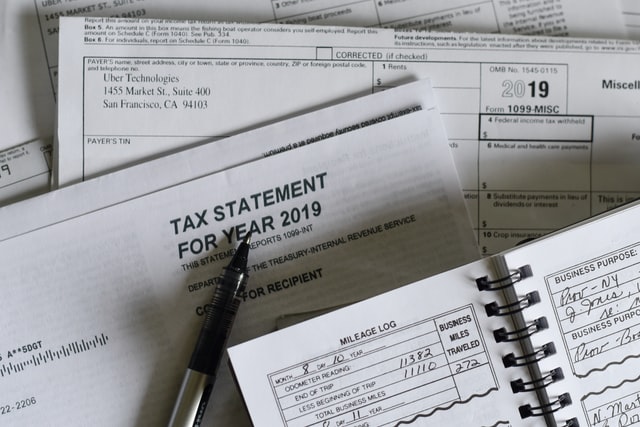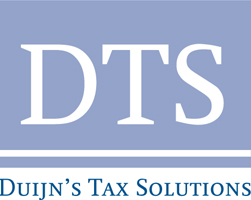Income Tax in the Netherlands
When you live in the Netherlands you pay tax in the Netherlands on your income, on your financial interests in a company and on your savings and investments. The Tax and Customs Administration (Belastingdienst) collects income tax.

We explore in this section
Dutch income tax in 2024
One of the significant adjustments in Box 1 is the alteration in the tax brackets and rates. Taxpayers earning income from employment, home ownership, and other sources will be confronted with an adjustment in how their income is taxed.
The government has aimed to create a fairer system by adjusting the brackets to better align with the current economic landscape. Therefore in 2024, the combined rate in the 1st bracket is 36,97% (was 36,03% in 2023) for income up to € 75.518 (€ 73.031 in 2023). The rate in the 2nd tax bracket in 2024 is 49.50%, which is the same as in 2023 and applies to income above the € 75.518 (€ 73.031 in 2023).
In 2023, taxpayers with income from substantial shareholdings (>5%) in Box 2 were subject to a flat tax rate of 26,9%. However, the landscape has evolved in 2024, introducing a different approach with two tax brackets – 24,5% and 33%. For individuals with Box 2 income up to € 67.000, a reduced tax rate of 24,5% applies. However, for those surpassing this threshold, the tax rate increases to 33%. This means that higher-income individuals with substantial dividend payments will experience a heavier tax burden compared to the previous uniform rate of 26,9%. A closer look reveals that the adjustment brings both challenges and opportunities. For fiscal partners, a dividend distribution of up to € 134.000 can benefit from the lower tax rate of 24,5%, provided they evenly distribute the income. This provision presents an opportunity for strategic income distribution planning among fiscal partners.
The Box 3 tax rate will increase from 32% in 2023 to 36% as of January 1st, 2024. The tax-free income in Box 3 will not be indexed per January 1st, 2024. This will remain € 57.000 and € 114.000 for fiscal partners.
Scaling back the 30% ruling
Last year it was announced that, as from January 1st of 2024, the salary to which the 30% ruling can be applied will be capped at the so-called Balkenende-norm (named after a former prime minister): this is the maximum salary for public servants. The Balkenende norm salary is indexed each year and will amount to € 233.000 gross in 2024. A transitional arrangement applies for employees who had an active 30% ruling in December 2022: the cap will only apply to them as from January 1st of 2026.
As said, additional amendments were announced on October 27th. and will also enter into force as per January 1st of 2024.
Firstly, the 30% ruling will get a graduated scheme: A 30% tax-free allowance applies in the first 20 months, a 20% tax-free allowance for the next 20 months and a 10% tax-free allowance for the last 20 months of the five year term. A transitional arrangement applies to employees to whose salary the 30% ruling is applied in December 2023; these employees will not be confronted with these adjustments during the term of their ruling.
Secondly, the amendment will terminate the aforementioned partial foreign taxpayer scheme for 30% ruling holders as of 2025. This means that the exemption on foreign-based Box 2 income (tax on income from more than 5% shareholding) and Box 3 income (tax on the deemed income of worldwide assets) will end. Here too a transitional arrangement applies to employees to whose salary the 30% ruling is applied in December 2023: they will only be confronted with this change as per 2027.
It's important to know that - if an employee that has the 30% ruling changes employers during the term of the ruling – he/she can still use the abovementioned transitional arrangement if he/she enters into a new qualifying employment with a Dutch employer within 3 months.
Types of income tax
You are subjected to pay tax on your income when you live in the Netherlands. Some of your expenditures may be tax-deductible.
For tax purposes, income is divided into three categories (known as boxes).
- Box 1 - Income from work and home ownership
- Box 2 - Financial interests in a company
- Box 3 - Savings and investments.
Tax on income from work and home ownership (box 1)
In box 1, you pay tax on your taxable income from work and home ownership.
Income from work includes:
- salary, tips or business profits;
- benefit, pension, annuities and maintenance payments;
- income from abroad;
- income earned as a freelancer, childminder, artist or professional athlete.
Income in box 1 is taxed at a progressive rate with four tax brackets. Once you have reached the state pension age, a special rate applies. The government intends to reduce these four tax brackets down to two in 2021.
| Box 1 Tax Rate 2022 | ||
| Tax bracket | Tax rate | |
|---|---|---|
| € 0 - € 69,397 | 37.07 % | |
| € 69,398 and upwards | 49.50 % | |
| Box 1 Tax Rate 2023 | ||
| Tax bracket | Tax rate | |
|---|---|---|
| € 0 - € 73.071 | 36,93 % | |
| € 73.071 and upwards | 49.50 % | |
Deductible items and tax credits
Some expenditures are deductible from your income from work and home ownership (personal allowances). The tax is calculated on the remaining amount. Your tax credits are then deducted, leaving the amount of tax payable.
Tax on substantial interests (box 2)
In box 2, you pay tax on any substantial interests. You have a substantial interest if you, or you and a tax partner together, own at least 5% of the shares, options or profit-sharing certificates in a company. You pay 25% tax on income from substantial interests.
| Tax year | Tax Rate |
|---|---|
| 2023 | 26.90 % |
| 2022 | 26.90 % |
| 2021 | 26.90 % |
Savings and investments (box 3)
You pay tax on income from your wealth, including savings, shares and a second home. It is calculated as the value of all assets (such as savings and shares) minus any debts. Part of your wealth is not taxable: the capital yield tax allowance. You pay 30% tax on your taxable income from savings and investments. The government assumes a fixed return, which varies, depending on your savings and investments.
| Total asset | Tax rate over total asset |
|---|---|
| € 0 – € 50,649 | 1.82 % |
| € 50,650 – € 962,349 | 4.37 % |
| € 962,350 and over | 5.53 % |
FAQ about Income Tax in the Netherlands
What is the income tax rate in the Netherlands for 2023?
The income tax in the Netherlands for 2023 is 36,93 % between € 0 - € 73.071 and 49.50 % between € 73.071 and upwards.
Are taxes high in the Netherlands?
The Netherlands is considered a Welfare state, where higher earners pay up to 49,5% taxes over their salary. This is lowered considerably the last years but is still high compared to other countries.
Who pays taxes in the Netherlands?
If you live in the Netherlands or receive income from the Netherlands, you will have to pay income tax in the Netherlands. You will have to pay taxes in the Netherlands on your income, on your financial interests in a company and on your savings and investments.
What is the income tax rate in the Netherlands for 2024?
The income tax in the Netherlands for 2024 is 36,93 % between € 0 - € 73.071 and 49.50 % between € 73.071 and upwards.
Recommended experts
taxt
taxt provides online income tax filing services for individuals in the Netherlands. Our tax experts will handle everything for you. All you need to do is answer a few simple questions, register, upload the requested info and wait for our tax specialists to process your tax return optimally. You can be done with your annual income tax filing in less than 10 minutes. Online. Easy. Affordable.
Suurmond Taxconsultants
Suurmond Taxconsultants is a tax advising company in The Netherlands, near Rotterdam. Don’t miss out on any Dutch tax relief possibilities! Contact our experts now for cutting edge tax advice in international situations.
DTS Duijn's Tax Solutions
The Dutch tax advisors at Duijn’s Tax Solutions have been providing businesses and individuals with Dutch tax advise in The Netherlands for over 15 years. We provide a broad range of Dutch tax consulting services. Through our international tax network of tax advisors, we are able to provide seamless cross border tax advice to over 100 countries.



